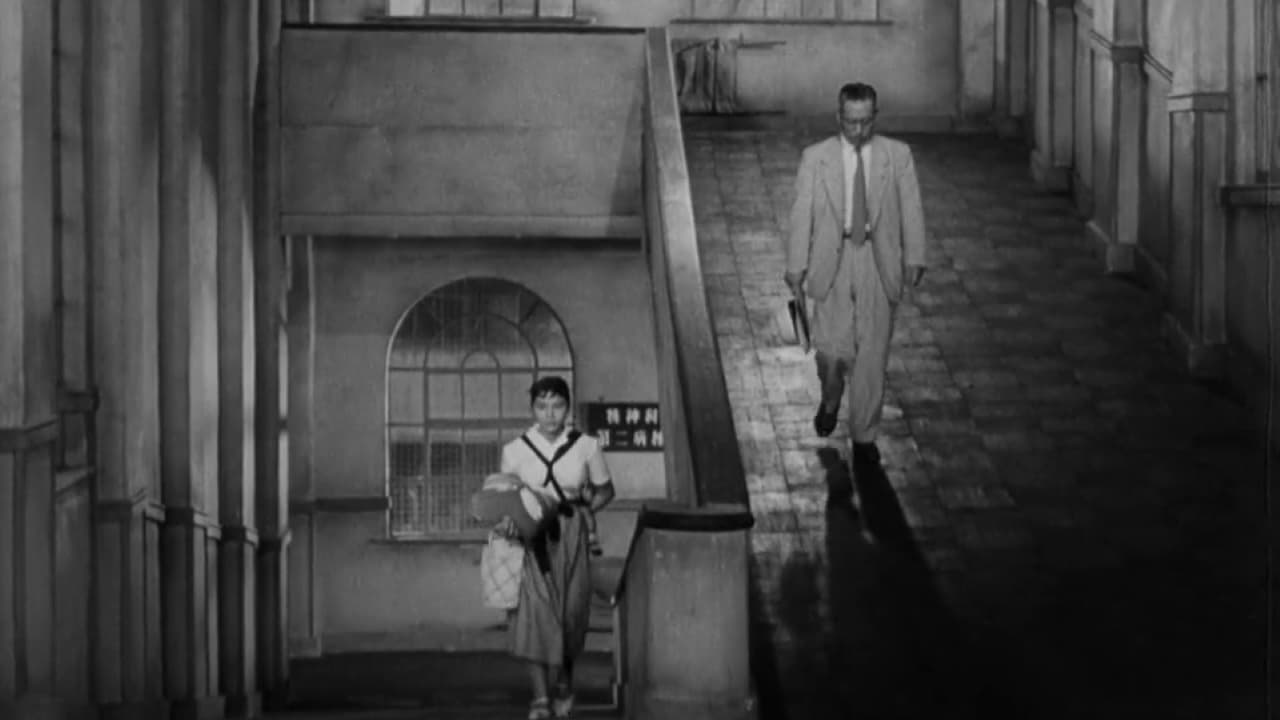Plantiana
Yawn. Poorly Filmed Snooze Fest.
Neive Bellamy
Excellent and certainly provocative... If nothing else, the film is a real conversation starter.
Philippa
All of these films share one commonality, that being a kind of emotional center that humanizes a cast of monsters.
Phillipa
Strong acting helps the film overcome an uncertain premise and create characters that hold our attention absolutely.
RanchoTuVu
A Tokyo dentist in post war Japan volunteers his time to serve as a family court mediator and in that capacity gets involved in a case in which a Japanese industrialist's mental capacity is challenged by his family when he decides to sell his business and move his family, including his mistresses and illegitimate children (and later even all his employees who would be left out in the cold), to a large farm in Brazil. Toshiro Mifune plays the part of the industrialist, whose motivation for leaving is a strong fear of dying in another nuclear attack or as a result of fallout from nuclear test bombs. Is his fear and his response to it rational or evidence of mental instability? The family itself is divided, though no one wants to pack up and go to Brazil. The divisions within the family add a lot of drama. They arise out of respect for the father as the leader and provider as opposed to their more basic monetary concerns. They also feel guilty about what they are trying to do. The complexity is expertly directed by Akira Kurosawa, who conveys it on the screen in a way in which each scene builds the drama. Mifune is excellent, but so are the other actors. The real star is the story itself and what it says about a man's fear.
jzappa
From the very very beginning during the opening credits sequence, we are given the ominous feeling of paranoia, the feeling with which it's vital to sympathize with Toshiro Mifune's character, an old foundry owner convinced that Japan is on the brink of nuclear obliteration, trying to force his reluctant and resentful family to safety in Brazil.Mifune's performance is so very masculine and real, as are nearly all of them. In this film, he displays a self-assurance that allows him to descend into pathetic helplessness. Of all the post-war Kurosawa films that I've seen so far, I Live In Fear is the most direct and informative. America may feed off of the dread showcased by the Japanese culture in this film and some may feel terribly sad for the individualistic portrayal of the debilitating fear stricken into the immovable hearts of stubborn old men like Mifune's character.Even as early as WWII, I learned, America's most powerful weapon has been fear. However, in those times, it was a much purer, less vain utility. But what about the people it destroys for the sake of its own feeling of security?
sleepdeprived
"I Live in Fear" is a thought-provoking, moving film about love, greed and fear, framed as only Kurosawa could. If you're a fan it's a must see, as it explores new and old themes in a stark, interesting manner. Excellent acting through-out, and please look carefully--Mifune wears no make-up, just huge glasses and a perpetual scowl; his talent and intensity were all he needed. This film also gives us an interesting look at Japan after the bomb, and the different ways people chose to deal with the fear they all in fact felt. The film does not judge, sympathizing with the children even as it highlights their selfishness. A good movie to make you think about where we've been, and where we might be headed.
pyamada
This is a surprisingly complex film that continues to build and grow right before your eyes. Some of the action and plot mechanism may need to be "accepted" to work, but once you realize that this is not merely an exercise on moral judgements, but a very sly re-working of familiar King Lear themes, the film's power and nuances become evident. For all those who see Kagemusha as a high point, and Ran as a huge failure, they may seek solace in this film, which pushes the trope of the rash old man, who has become so accustomed to getting and doing what he wants, that he cannot and will not accept his extended family's naysaying and interference. A really great film.


